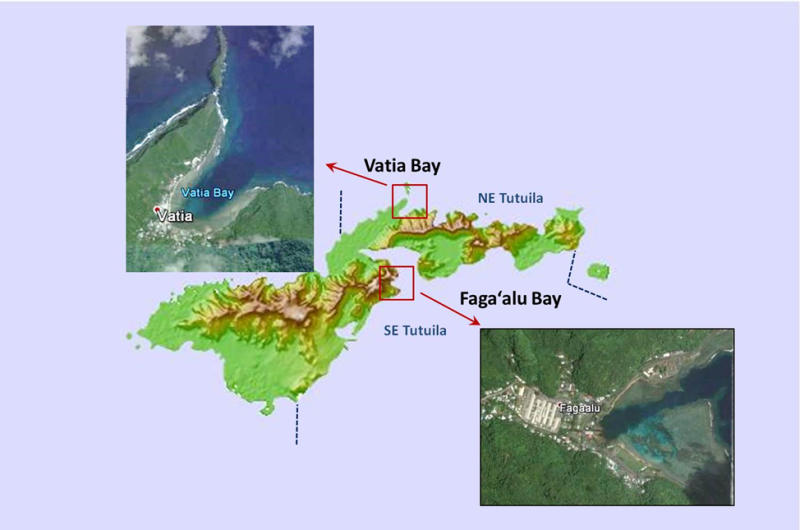NOAA and local partners are assessing and monitoring coral reef communities in Vatia Bay and Faga'alu in Tutuila, American Samoa.
Vatia Bay is one of two priority watersheds in American Samoa. Jurisdictional managers are concerned that land-based sources of pollution from the village of Vatia are having an adverse effect on the bay’s coral reef. The most predictable sources of pollution are inadequate management of pig farms and septic systems. Their contaminants enter the bay through streams or groundwater.
Parts of Faga’alu Bay have been affected by severe sedimentation stress from prolonged improper land use practices that cause excessive runoff. A nearby quarry contributed the most to the episodic flux of sediments onto the adjacent reef. Local and federal agencies identified corrective actions at the quarry to reduce these pollutants. In 2014, the quarry installed drainage systems, alternative ground cover, and retention ponds to mitigate the siltation.
Goals of Our 2020 Mission
This month, our NOAA scientists Bernardo Vargas-Ángel, Brittany Huntington, and Morgan Winston are conducting underwater surveys. They will examine the status of the reef since the quarry undertook management interventions to reduce the amount of sediments delivered to the reef. Using SCUBA allows us to get close enough to the corals to measure colony size, species, and health condition.
A fundamental component of this mission is to help local and federal agencies in American Samoa continue coral reef monitoring surveys beyond this mission. We are conducting 2–3 days of classroom and in-water reef sampling training for local and federal partners. We are also providing them with a new geographic information systems tool that shows human and environmental stressors that affect reefs around Tutuila. These partners include the American Samoa Department of Marine & Wildlife Coral Reef Advisory Group and the National Marine Sanctuary of American Samoa.
Impacts of Land-based Sources of Pollution on Coral Reefs
Sediment, nutrients, toxic substances, and pathogens from land-based activities are transported in surface waters, runoff, groundwater seepage, or wind to adjacent coral reefs. Together, these stressors can affect the reef in several ways:
- Inhibit coral growth, reproduction, and recruitment.
- Alter food web dynamics causing shifts in community structure and function.
- Cause disease and partial death.
This kind of pollution can also fuel the growth of macroalgae, which can out-compete juvenile and adult corals for space on the reef. The effects are worse in American Samoa and other islands in the U.S. Pacific. This is due to poor land use practices, inadequate wastewater management, elevated rainfall, highly erodible soils, and storm events such as tropical cyclones.
Past Work in Faga‘alu and Vatia Bays
Our researchers conducted baseline assessments of benthic communities at Faga‘alu Bay in 2012 and 2013. In 2015, following the implementation of the Erosion and Sediment Control Plan at the quarry, we conducted the first post-mitigation surveys. We also conducted surveys that year in Vatia Bay, providing the first comprehensive assessment of reef status and the effects of nutrient and sediment runoff. To quantify the effectiveness of management interventions, we must compare the baseline assessments with periodic long-term monitoring of coral community structure and demographics.
Now, we will examine this year’s survey data and compare the results with the existing baseline assessments. This work will enable federal and jurisdictional resource managers to inform watershed management plans, conserve coral reef ecosystems, and manage ecosystem reserves in American Samoa.


